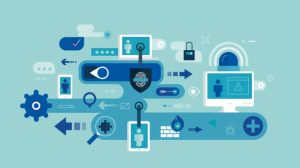In the ever-evolving landscape of cybersecurity threats, one critical factor often overlooked is the human element. Despite the most advanced technological defenses, human vulnerabilities remain a significant risk factor in cybersecurity. Whether it’s falling prey to phishing scams, neglecting security protocols, or inadvertently disclosing sensitive information, users can inadvertently expose organizations to cyber threats.
In this blog, we’ll explore the importance of addressing user vulnerabilities in cybersecurity and strategies to mitigate these risks effectively.
Understanding User Vulnerabilities in Cybersecurity
User vulnerabilities encompass a wide range of behaviors, habits, and knowledge gaps that can inadvertently compromise cybersecurity defenses. These vulnerabilities manifest in various forms, including:
- Lack of awareness about cyber threats and best practices.
- Succumbing to social engineering tactics, such as phishing emails or pretexting.
- Ignoring security protocols, such as using weak passwords or sharing credentials.
- Careless handling of sensitive information, both online and offline.
The Human Factor: A Critical Cybersecurity Challenge
Despite advancements in technology and security measures, human error remains one of the leading causes of security breaches. Cyber attackers often exploit human vulnerabilities as the weakest link in the security chain, capitalizing on factors such as trust, curiosity, and lack of awareness to infiltrate systems and steal sensitive data. Addressing user vulnerabilities is therefore paramount for organizations seeking to bolster their cybersecurity defenses and mitigate the risk of data breaches and cyber attacks.
Strategies for Addressing User Vulnerabilities
-
Cybersecurity Awareness Training:
- Provide comprehensive cybersecurity awareness training to all employees, covering topics such as phishing awareness, password security, and data handling best practices.
- Offer regular updates and refresher courses to ensure employees stay informed about the latest cyber threats and mitigation strategies.
-
Simulated Phishing Exercises:
- Conduct simulated phishing exercises to assess employees’ susceptibility to phishing scams and reinforce training efforts.
- Provide feedback and guidance to employees based on their performance in simulated exercises, helping them recognize and avoid phishing attempts in real-world scenarios.
-
Strong Authentication Mechanisms:
- Implement multi-factor authentication (MFA) and strong password policies to enhance authentication security and prevent unauthorized access to systems and data.
- Encourage the use of password managers to generate and store complex passwords securely.
-
Security Culture and Accountability:
- Foster a security-conscious culture within the organization by promoting accountability and ownership of cybersecurity responsibilities at all levels.
- Recognize and reward employees who demonstrate exemplary security practices and contribute to strengthening cybersecurity defenses.
-
Continuous Monitoring and Incident Response:
- Implement robust monitoring tools and processes to detect anomalous behavior and potential security incidents proactively.
- Develop and rehearse incident response plans to enable swift and effective response to security breaches or insider threats.
In the dynamic landscape of cybersecurity, addressing user vulnerabilities is a critical imperative for organizations seeking to fortify their defenses against evolving threats. By recognizing the human factor as a key cybersecurity challenge and implementing targeted strategies to mitigate user vulnerabilities, organizations can significantly enhance their resilience to cyber attacks and data breaches.
From comprehensive training programs to robust authentication mechanisms and a culture of security awareness, every effort to address user vulnerabilities contributes to building a more resilient cybersecurity posture. By empowering users to become active participants in cybersecurity defense, organizations can collectively strengthen their ability to detect, prevent, and respond to cyber threats effectively.
Stay tuned to our blog for more insights on cybersecurity best practices and strategies for addressing user vulnerabilities. Your cybersecurity is our priority.






